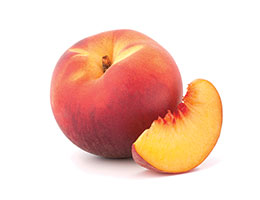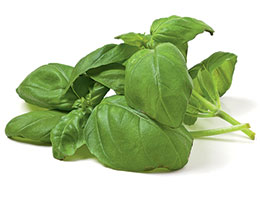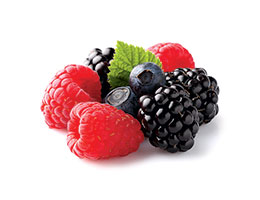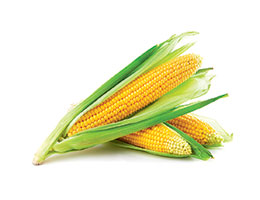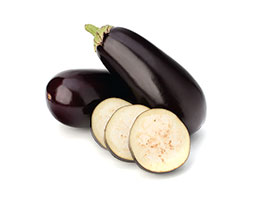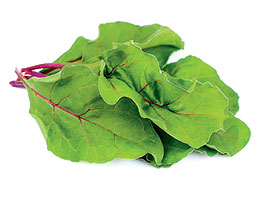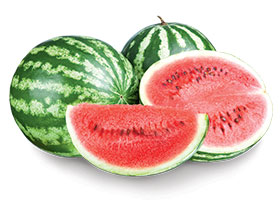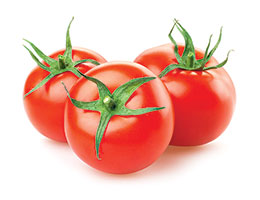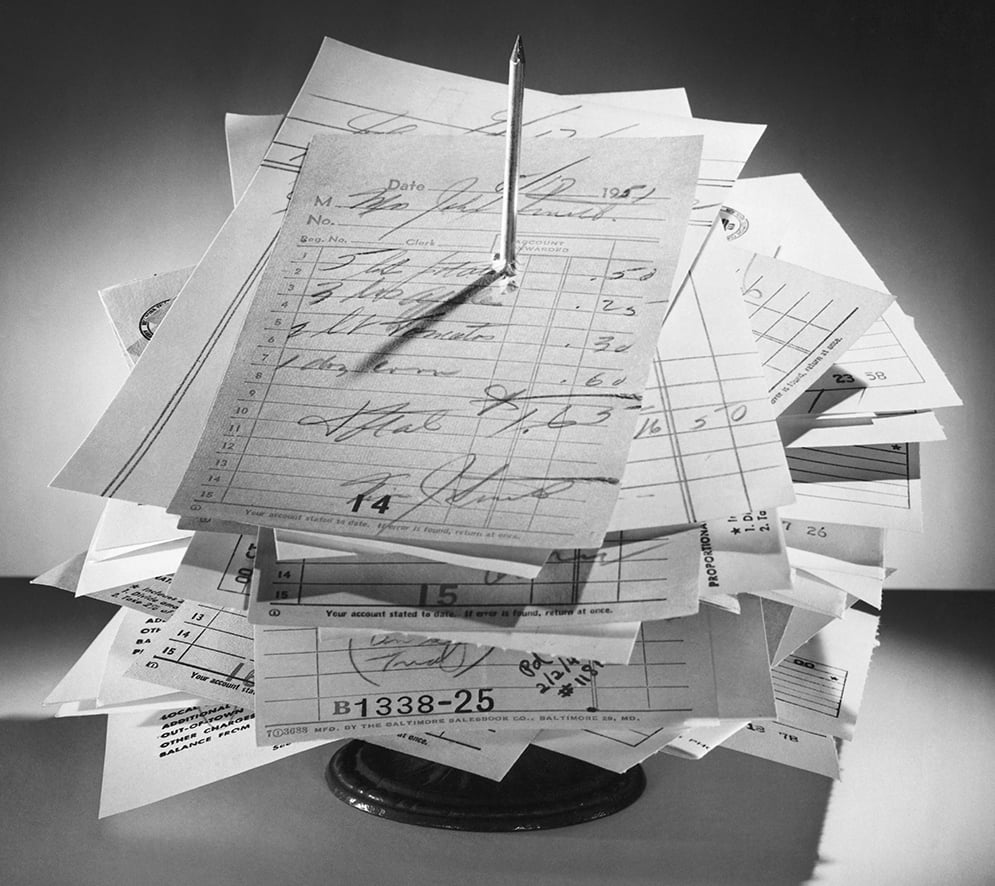Peaches
Ripe?
A peach should give a little to the touch and have a floral
aroma. The rule: If it’s ready to squeeze, it’s ready to eat.
Storage
Ripe peaches go in the refrigerator. If they’re not quite ripe,
room temperature is best until they are. Avoid stacking to prevent
bruising.
|
Basil
Ripe?
Ripe basil is kelly green, not yellow. The small leaves of a
young plant will be more tender and flavorful than the bigger leaves of a
mature plant.
Storage
In the clamshell container it comes in, at room temperature;
use within a day or two. Basil turns black when stored in the fridge.
Hydroponic versions, sold in a bag with water, should be stored at room
temperature as well, out of sunlight.
|
Berries
Ripe?
Strawberries should have a fruity aroma and be red all over
with no white “shoulders.” The test for blueberries is to taste one;
barring that, test by smell. Raspberries shouldn’t be flat or mushy and
should have a deep red hue.
Storage
Refrigerate ripe berries, but for eating, get them to room
temperature to bring out the aroma. Blueberries can be rinsed before
storing and will last a few days.
|
Corn
Ripe?
Peel back the husk and look for an unblemished tip and
consistent rows of kernels. July has the tenderest corn. You should be
able to pierce a kernel with your finger; if you can’t, the corn may be
tough.
Storage
Snip silk at the tip to avoid mildew, and stash unhusked corn
in the fridge (no bag needed); eat as soon as possible. It lasts up to
seven days in the refrigerator, though flavor will
deteriorate.
|
Eggplant
Ripe?
Look for consistency in color and texture. There should be no
wrinkles on the skin and especially on the tip, where they signify age.
Heavier specimens are fleshier; lighter eggplants tend to be drier;
moisture can mean bitterness unless you salt slices or cubes and let them
sit before using them.
Storage
In the refrigerator; it will last up to four days.
|
Leafy Greens
Ripe?
Look for good color in the leaf or stem. Rainbow chard should
be deep red, yellow, or dark green. Kale and collard greens should be dark
green; mustard greens should be lighter. Softer leaves taste better; if
they feel stiff, they’ll be tough.
Storage
Rinse before putting in a plastic bag in the fridge to keep
them moist, but leave the bag open so the leaves don’t decay. Ideally,
check moisture daily and spritz to keep them in top condition.
|
Melons
Ripe?
Tap or slap watermelon. If you hear a dull thud, it’s overripe;
a little ping is what you’re after—watermelon doesn’t ripen off the vine.
With cantaloupe, be sure the scent is sweet, the skin is uniform with no
soft spots, and, most important, the vine end is cleanly cut, meaning the
melon fell off the vine and was ready to pick. For honeydew, look for
green and yellow hues; excessive firmness means it’s not ripe.
Storage
Watermelon does best at room temperature—it’ll last up to a
week. You can place it in the fridge a couple of hours before eating.
Cantaloupe and honeydew should be stored in the refrigerator.
|
Tomatoes
Ripe?
Color is the best clue with beefsteaks—look for a deep red.
With grape or cherry varieties, avoid green or yellow ends. A “tomatoey”
aroma and giving a little when squeezed are good indicators,
too.
Storage
At room temperature, out of the sun. Tomatoes will ripen off
the vine.
|
